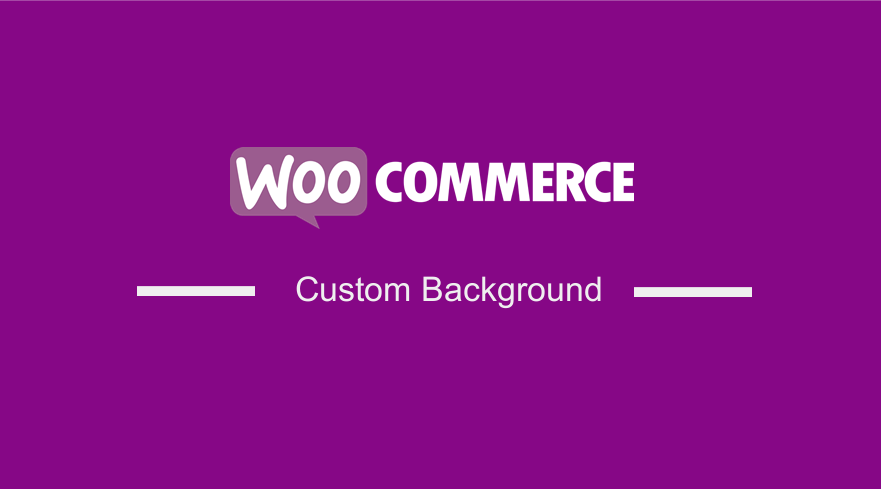 Are you looking for a way to display a custom background image in your WooCommerce store? In today’s post, we will show you how to upload a background image for your entire website. For you to understand this, it is essential to understand the basics of uploading an image in WordPress.
Are you looking for a way to display a custom background image in your WooCommerce store? In today’s post, we will show you how to upload a background image for your entire website. For you to understand this, it is essential to understand the basics of uploading an image in WordPress.
A custom background image serves as the full background of your website. If custom background support is enabled in your theme, it is very easy to upload an image or choose a color to fill the background. These options are located in the WordPress dashboard.
It is important to note that other types of backgrounds are possible through plugins, drag-and-drop page builders, and many more. Uploading the background image is only part of the process. This is because you need to configure the background image settings.
However, there are times that you can leave the settings as is, or reconfigure the settings to ensure the image looks excellent. For example, you can change the sizing, image position, background color, whether or not the image should repeat, and options to fill the screen or stretch the image.
Before we start, let us look at the different styles of backgrounds available for WordPress.
Different Styles of Backgrounds
It is worth mentioning that not all WordPress backgrounds are static images. It is possible to implement unique backgrounds by using plugins or custom CSS. Here are some of the background styles available:
- Standard Background Images – These are static images, which sit behind the primary content. They stretch over most website space and include PNG, JPG, and other image formats.
- Solid Color Backgrounds – This background is a solid color that adds some vibrancy to your site, if you do not have any image. The color background should fit your brand colors to present a cleaner, more professional site.
- Gradient Backgrounds – This type of background transitions from one color to another. It makes your online store more visually appealing than a solid color. However, the only problem is if the gradient does not match the foreground.
- Pattern or Texture Backgrounds – These background photos focus on repetitive items in the image or a close-up texture.
- Image Slideshow Backgrounds – This background allows site owners to share multiple types of designs or photos to adjust the mood when customers scroll through your site.
- Video Backgrounds – Video backgrounds are fun to watch and allow you to portray the nature of your brand in an engaging way.
Steps to Add Background Support in a Theme
Unfortunately, not all themes support custom background images. One of the reasons for doing this is if the background doesn’t fit into the theme’s overall design. This leaves you with no dashboard setting to turn it on.
Here are the simple steps to fix this:
- Log into your WordPress site and access the Dashboard as the admin user.
- From the Dashboard menu, click on Appearance Menu > Theme Editor Menu. When the Theme Editor page is opened, look for the theme functions file to add the function to add background support.
- Add the following code to the php file:
‘default-color’ => ”,
‘default-image’ => ”,
‘default-repeat’ => ”,
‘default-position-x’ => ”,
‘default-attachment’ => ”,
‘wp-head-callback’ => ‘_custom_background_cb’,
‘admin-head-callback’ => ”,
‘admin-preview-callback’ => ”
);
add_theme_support( ‘custom-background’, $defaults ); [/php]
- Remember to add a default background image for the entire theme in the default-image value and add the image’s URL to the blank space between the ‘ ‘ after the =>.
Conclusion
In summary, we have shared how you can add background support to any WordPress site. This allows you to add any custom background image by turning the feature on in the WordPress dashboard.
However, if your theme does not have background support, we recommend changing it. We hope that this post helped you add a custom background image to your site.
Similar Articles
- 30+ Best WordPress Backup Plugins to Protect Your Site
- How to Remove Uncategorized Category In WordPress WooCommerce
- How to Change WordPress Site URL without Dashboard Access
- 100+ Best Free WordPress Plugins By Popularity, Ratings & Users
- How to Change the WooCommerce ‘Added to Cart’ Notice
- How to Access WordPress Admin Dashboard or Login to your WordPress Dashboard
- How to Change WooCommerce Storefront Featured Image Size
- How to Add Star Rating To WooCommerce Product
- How to Add WooCommerce Registration Email Verification
- Wix vs WordPress Complete Comparison » [Features, Pros & Cons]
- How to Change WooCommerce Checkout Page Title
- How to Edit Header in Storefront WooCommerce Theme
- How to Add Custom Product Fields WooCommerce
- How to Speed Up WooCommerce Website
- How to Add Video In Product Image WooCommerce
- How to Add CAPTCHA WooCommerce Login
- 35+ Best Image Optimization Plugins for WordPress Loading Speed Optimization
- 15+ Best WordPress Maintenance Services » WordPress Website Care
- How to Login to WooCommerce Admin
